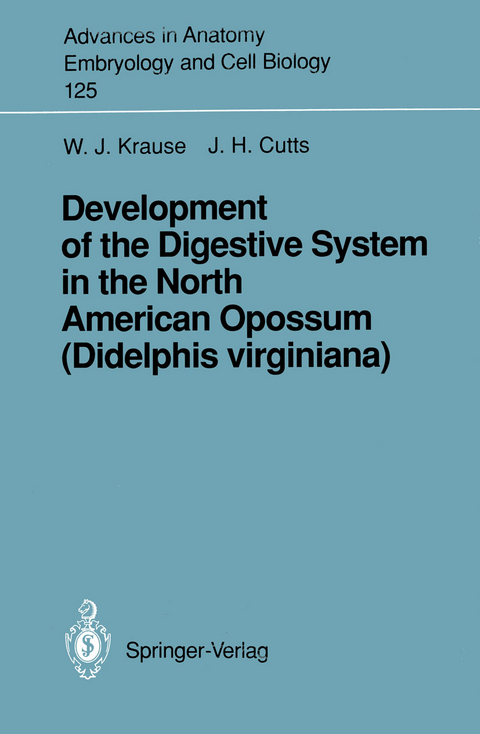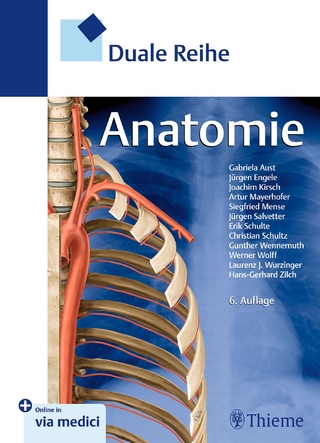Development of the Digestive System in the North American Opossum (Didelphis virginiana)
Springer Berlin (Verlag)
978-3-540-55149-2 (ISBN)
1 Introduction.- 1.1 Endoderm Formation.- 1.2 State of Visceral and Other Structures at Birth.- 1.3 The Scope of This Review.- 2 Oral Cavity.- 2.1 Prenatal Development.- 2.2 Postnatal Development.- 2.3 Adult Teeth.- 2.4 Adult Tongue.- 2.5 Jaws and Associated Musculature.- 2.6 Adult Salivary Glands.- 3 Esophagus.- 3.1 Prenatal Development.- 3.2 Postnatal Development.- 3.3 Structure of Adult Esophagus.- 4 Stomach.- 4.1 Prenatal Development.- 4.2 Postnatal Development.- 5 Small Intestine and Colon.- 5.1 Prenatal Development of Small Intestine and Colon.- 5.2 Postnatal Development of Small Intestine.- 5.3 Postnatal Development of Colon.- 5.4 Caecum.- 5.5 Comparison of Enteroendocrine Cells in the Gastrointestinal Tract of the Adult.- 5.6 Interaction Between Enteroendocrine and Exocrine Components of the Gut.- 6 Pancreas.- 6.1 Prenatal Development.- 6.2 Postnatal Development.- 7 Liver.- 7.1 Prenatal Development.- 7.2 Postnatal Development.- 7.3 Gallbladder and Common Bile Duct of the Adult Opossum.- 7.4 Opossum Bile.- 8 Factors That Influence the Differentiation and Growth of Glands Associated with the Gastrointestinal Mucosa.- 9 Concluding Remarks.- References.
| Erscheint lt. Verlag | 15.6.1992 |
|---|---|
| Reihe/Serie | Advances in Anatomy, Embryology and Cell Biology |
| Zusatzinfo | VIII, 151 p. 22 illus. |
| Verlagsort | Berlin |
| Sprache | englisch |
| Maße | 170 x 242 mm |
| Gewicht | 365 g |
| Themenwelt | Studium ► 1. Studienabschnitt (Vorklinik) ► Anatomie / Neuroanatomie |
| Naturwissenschaften ► Biologie ► Genetik / Molekularbiologie | |
| Naturwissenschaften ► Biologie ► Zoologie | |
| Schlagworte | Development • Digestive System, Opossum • Endoderm • pancreas • Verdauungssystem, Opossum |
| ISBN-10 | 3-540-55149-2 / 3540551492 |
| ISBN-13 | 978-3-540-55149-2 / 9783540551492 |
| Zustand | Neuware |
| Informationen gemäß Produktsicherheitsverordnung (GPSR) | |
| Haben Sie eine Frage zum Produkt? |
aus dem Bereich




